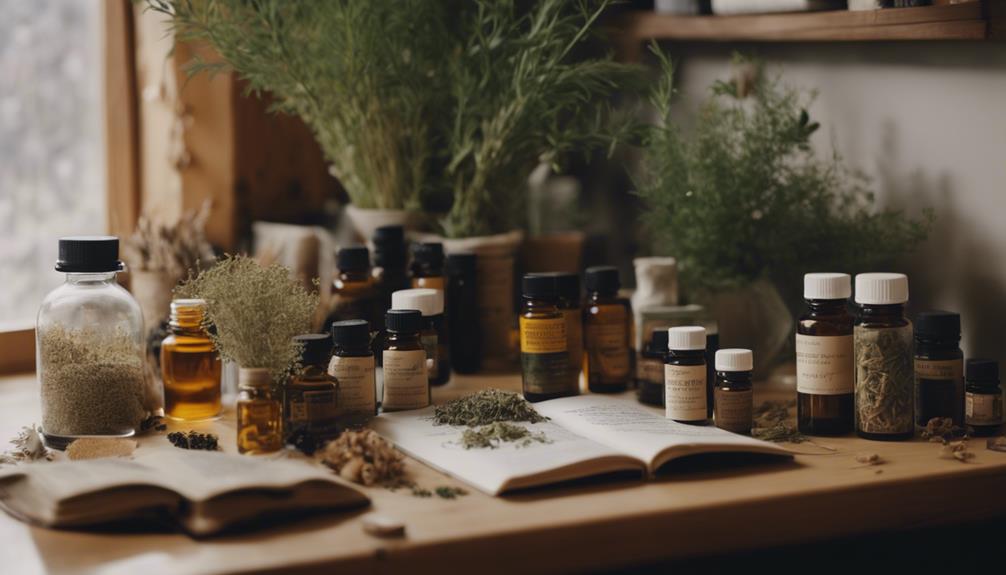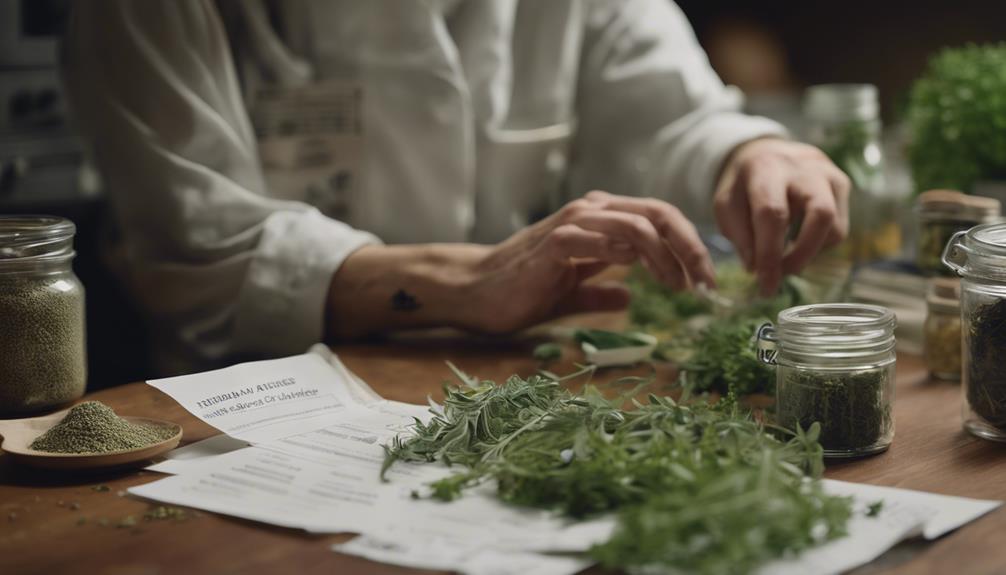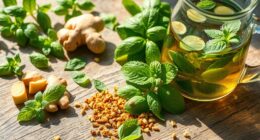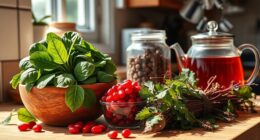Herbalism practices in the US operate in a vital gray area due to lacking thorough governmental regulation. While herbalists can provide general information on herbal teas and supplements, they cannot offer medical treatments or prescribe medication. Legal boundaries remain ambiguous, with potential legal implications for practicing without proper certification. It is essential to understand the legal implications surrounding herbalism practices to navigate this regulatory landscape effectively. In-depth information on the regulations, boundaries, ethical practices, and compliance with legal guidelines sheds light on this intricate topic.
Key Takeaways
- Herbalism practices are not illegal in the US.
- Legal ambiguity exists due to lack of governmental regulation.
- Herbalists must adhere to strict boundaries and guidelines.
- Providing medical treatments without certification can lead to legal issues.
- Practitioners should prioritize compliance with legal standards.
Legal Status of Herbalism
Although herbalism in the US operates in a grey area due to the lack of governmental regulation, herbalists aren't authorized to provide medical treatments or prescribe medication. Without clear guidelines set by the government, the legal boundaries for herbal practitioners in the United States remain ambiguous. Practicing herbalism without the appropriate certification can lead to legal implications, underscoring the importance of understanding the legal implications surrounding herbalism practices.
In the US, herbal traditions have a long history, with holistic herbalism being a common approach to healthcare. However, without a standardized herbal practitioner certification process, individuals must navigate the legal landscape carefully. While herbalists can offer guidance on wellness and support overall health, diagnosing specific health conditions and treating diseases fall outside their scope of practice.
To operate ethically and within the law, herbalists must stay informed about the legal implications of their work and make sure they aren't overstepping legal boundaries in their practice.
Regulations for Herbalists

Regulations for herbalists in the US are essential for ensuring ethical and legal practice. The American Herbalist Guild (AHG) plays a significant role in setting standards for herbalists, emphasizing the importance of Herbal Education and overseeing clinical hours.
While herbalists can legally provide general information on herbal teas, dietary supplements, and wellness practices, they're restricted from offering medical advice, diagnosing illnesses, or treating diseases. To avoid crossing into the domain of practicing medicine without a license, herbalists must carefully navigate their language and interactions with clients.
Becoming a Master Herbalist involves rigorous training and adherence to the guidelines set by organizations like the AHG. In North American herbalism, practitioners are encouraged to stay within their scope of practice to ensure client safety and legal compliance.
Understanding these regulations is vital for herbalists to operate professionally and responsibly within the bounds of the law.
Boundaries for Herbal Consultations

Understanding the limitations of herbal consultations is vital for herbalists practicing in the US. In this scenario, herbalists are restricted from diagnosing, prescribing medication, or treating diseases. Instead, they primarily focus on conducting holistic assessments and providing suggestions related to diet, lifestyle modifications, and herbal recommendations.
Herbalists often aim to support organ systems and tissues through their herbal suggestions, tailoring their approach to individual needs. Legal restrictions play an important role in defining the boundaries of herbal consultations, preventing herbalists from offering medical treatments that fall outside their scope of practice.
Ethical Herbal Practices

Prioritizing ethical conduct is fundamental in herbal practices to guarantee the well-being of clients and uphold professional standards. Simply by making sure herbalists are certified to help people, it enables someone to hold professional standards in their practice. This brings us to questioning around the Herbalist Guild, where upholding ethical conduct is a central focus. Herbalists must ensure that their recommendations align with legal guidelines to avoid being sued for practicing medicine without a license. Ethical communication in herbalism involves holistic evaluation, where suggestions are made regarding diet, lifestyle adjustments, and herbal remedies. By following this path, herbalists can ensure that they are providing safe and effective care for their clients without overstepping legal boundaries.
| Ethical Herbal Practices | Importance |
|---|---|
| Certified Herbalists | Ensuring professional standards |
| Legal Guidelines | Aligning recommendations |
| Herbalist Guild | Upholding ethical conduct |
| Holistic Evaluation | Comprehensive care |
| Ethical Communication | Respecting legal boundaries |
Compliance With Legal Guidelines

To uphold ethical conduct and professional standards in herbal practices, adherence to legal guidelines is essential for herbalists in the US. Herbalism practices must align with governmental regulations to guarantee compliance and ethical herbal practice.
It's vital for herbalists to understand that without proper licensure, they're prohibited from diagnosing, prescribing medicine, or treating diseases. Maneuvering the lack of governmental regulation in herbalism demands a meticulous approach to staying within legal boundaries.
Practitioners must prioritize ethical communication and uphold professional standards during consultations to maintain the integrity of the practice. By recognizing and abiding by legal limitations, herbalists can establish trust with clients and safeguard themselves from potential legal consequences.
Maintaining a thorough understanding of the legal framework surrounding herbalism is essential for practitioners to operate responsibly and ethically within the US healthcare landscape.
Frequently Asked Questions
Is It Illegal to Practice Herbalism in the United States?
Practicing herbalism in the United States involves legal limitations on diagnosing, prescribing medicine, and treating diseases. Understanding these boundaries is crucial to guarantee compliance with regulations and professional standards in herbal consultations.
Is Herbal Medicine Allowed in Usa?
Herbal medicine is allowed in the US. Herbalists can recommend herbs, diet, and lifestyle changes within legal boundaries. It's important to comprehend the limitations and adhere to regulations to guarantee ethical practice.
Is Herbalism Regulated?
Is herbalism regulated? Absolutely. While not heavily centralized, herbalists must adhere to restrictions on diagnosing and prescribing. Without proper certifications, legal implications arise. Understanding these boundaries guarantees ethical and compliant consultations in herbal practice.
Can a Herbalist Be Sued?
We need to be cautious as herbalists. Lawsuits can happen if we overstep legal boundaries by diagnosing, prescribing, or treating diseases. Sticking to ethical practices and clear communication is crucial to avoid legal issues.
Conclusion
To sum up, herbalism practices are legal in the US, but there are regulations and boundaries that herbalists must adhere to.
It's important for herbalists to comply with legal guidelines, maintain ethical practices, and only provide consultations within their scope of expertise.
As the saying goes, 'An ounce of prevention is worth a pound of cure,' herbalists must prioritize the well-being of their clients while following the necessary legal protocols.










